The Azores are an autonomous archipelago of Portugal, located in the Northern Atlantic Ocean and being one of the best kept secrets of Europe. The subtropical Azores enchant the visitors with their comfortably warm climate, green vistas and amazing nature experiences, but also with their characteristic culture and history that is still very much alive.
The Azores make those who find their way to the islands fall in love with the archipelago and return to enjoy its peace over and over again.
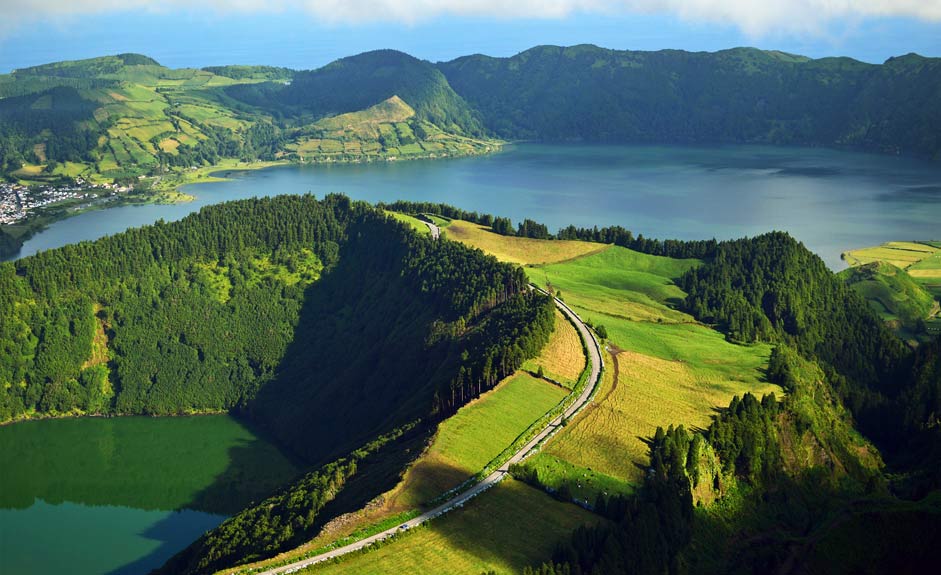
The Azores consist of 9 islands
The Azores archipelago is comprised of three island groups and nine islands, sprawling over a distance of 650 kilometers half-way between the continents of Europe and North America. The distances from one island to the next are usually relatively long.
- The Eastern Group includes the islands of São Miguel, the largest and most populated island of the archipelago, and Santa Maria, known as the sunniest island of the archipelago.
- The Central Group consists of the second most populated island Terceira, the island of Pico known for its volcano, Faial with the third largest population, wild and mountainous São Jorge and the smallest island of the Central Group, Graciosa.
- The remote Western Group is comprised of Flores, famous for its natural beauty, and the tiny island of Corvo, with only a couple of hundred inhabitants.
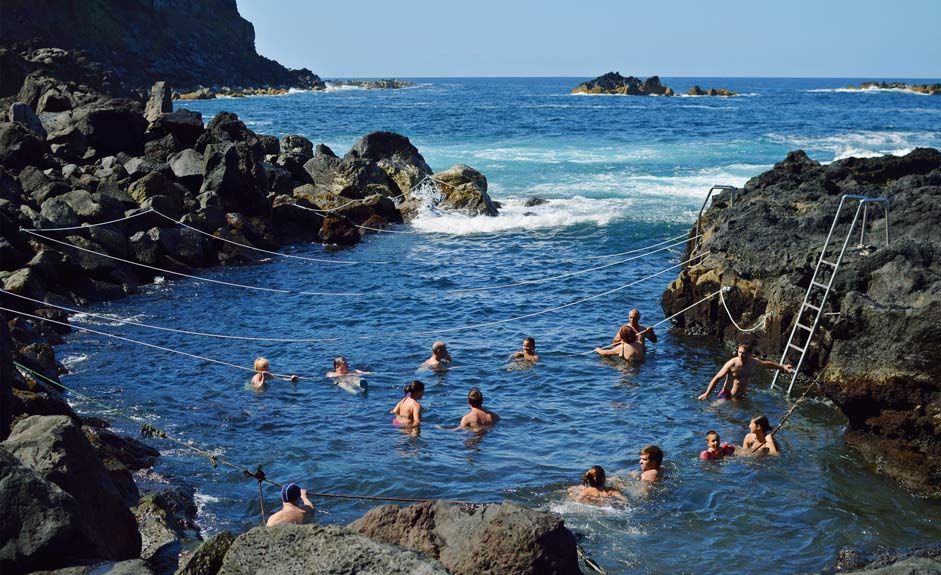
The Portuguese explorers arrived on the shores of the Azores, at that time uninhabited, in 1432. It marked the beginning of the settlement of the archipelago over a few centuries. Because of the gradual inhabitation and isolation, the Azorean islands still have significant differences in their traditions, dialects and cuisines. There is, however, some controversial evidence of an earlier settlement of the islands during the Stone Age.
Nowadays the Azores are an autonomous region of Portugal and home to some 245 000 inhabitants. However, the Azorean diaspora that settled especially in the United States and Canada is many times larger than the current population remaining in the archipelago. The most important industries in the Azores are agriculture, services and the tourism sector, which is investing especially in sustainable practices. As a proof, the Azores are the first archipelago in the world to receive the EarthCheck Certificate granted by the Global Council for Sustainable Tourism.
What to see and do in the Azores
The things that all the Azorean islands have in common are the incredible lushness enabled by the subtropical climate, amazing viewpoints and nature experiences. Especially activities on the water, such as diving, fishing and whale-watching tours are unique experiences in the Azores. Even though the archipelago is primarily a destination for nature lovers, the sympathetic towns like Ponta Delgada and Angra do Heroísmo, a UNESCO World Heritage site, offer plenty to see also for those enjoying culture, architecture and the urban vibe.
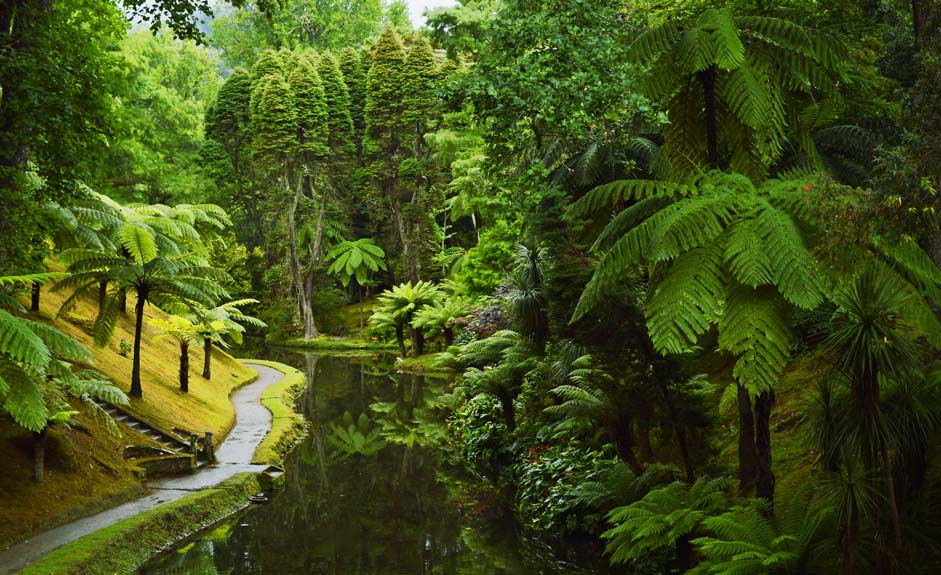
The vast views of the Azores are havens of perfect calmness, and the country life can be admired in the form of green fields rolling before the blue ocean, dotted with cows and the odd sheep or goat. The unhurried way of life can be absorbed in the historical villages of the archipelago, where it sometimes feels as if the time had stopped a few centuries ago. In the Azores, a horse carriage is still a going vehicle, and the catholic celebrations and bull fights keep the traditions well alive and kicking.
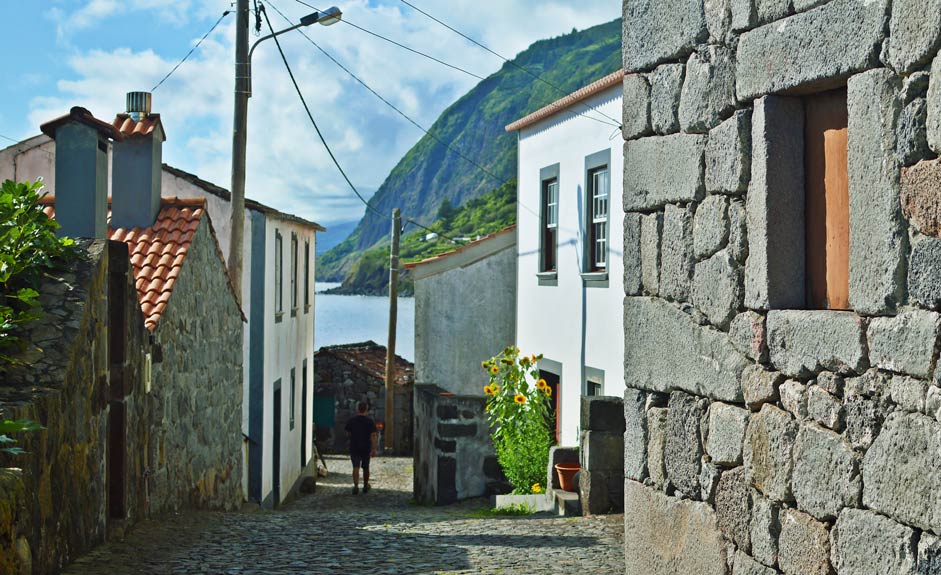
The volcanic origin of the islands is visible in many highlights of the Azores holiday. One can visit a dormant volcano on Terceira, bathe in the natural hot springs of São Miguel and Faial, located on both land and the ocean, while on the Pico island it’s possible to conquer an active volcano. There are also many crater lakes, untouched laurel forests, waterfalls and many other gorgeous natural wonders that can be admired either by foot or from the many viewpoints of the islands.
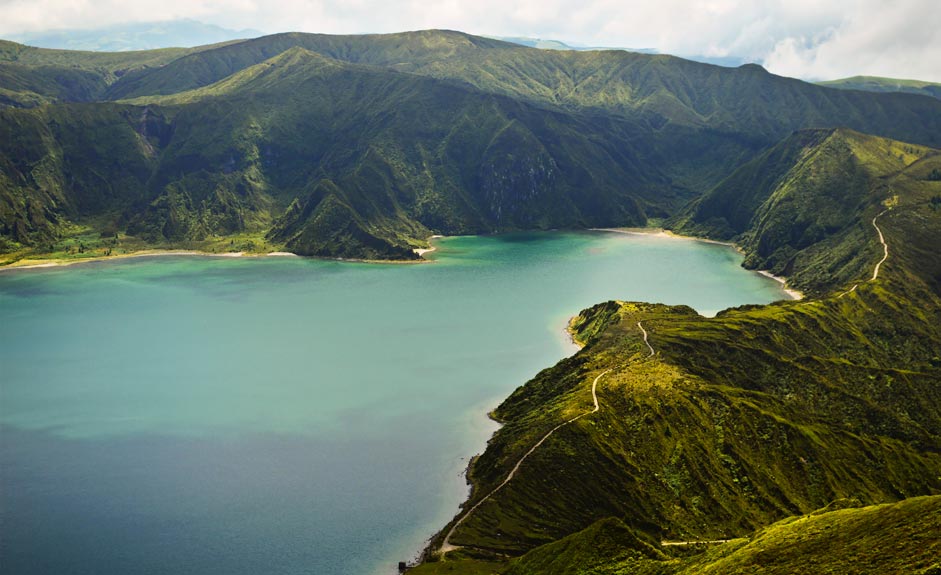
The Azores are a part of the island region of Macaronesia, consisting of islands of volcanic origin that have never been a part of any continent. Thanks to this, the Azores are home to many endemic species of flora and also some fauna. The native animal species include birds, such as the Azorean bullfinch, and the only endemic land mammal of the archipelago – a bat. There are no large land mammals or snakes living wild in the Azorean nature. Nevertheless, man has heavily modified the vegetation of the Azores and plantations of Japanese cedar as well as invasive exotic species such as hydrangeas and ginger lilies are occupying space from the native vegetation.
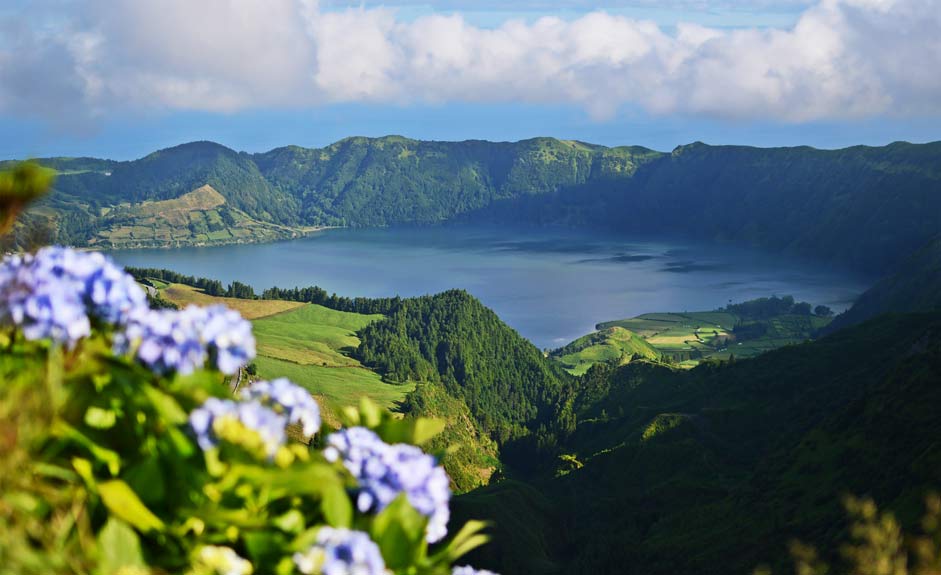
The Azores are a world-class whale watching destination, and with some luck it’s possible to spot several of the archipelago’s 25 species of whales and dolphins in their natural habitat. Spring is the best time to see marine mammals, but together with early summer, it’s also the prime time of the most dangerous animals of the archipelago: the Portuguese man o’ wars. These invertebrates float on the water and have stinging tentacles that can extend to several meters long. If getting stung by a Portuguese man o’ war, the wound should be rinsed with sea water and vinegar or urine, and a physician should be immediately contacted. Fresh water, alcohol or pressure should never be applied to the burn, because these just accelerate the absorption of the toxins into the body.
Even though the Azores holiday isn't known as a beach vacation, there are some beautiful sandy stretches for swimming and sunbathing. The sand is usually more or less dark in color, but the water is crystal clear. Natural pools formed by volcanic rocks are also popular swimming holes in the summertime.
The Azores holiday on a single island vs. island hopping
It’s possible to enjoy the Azores holiday either by getting to know one single island well or doing a multi-stop island hopping tour, getting a taste of many different islands on the same trip.
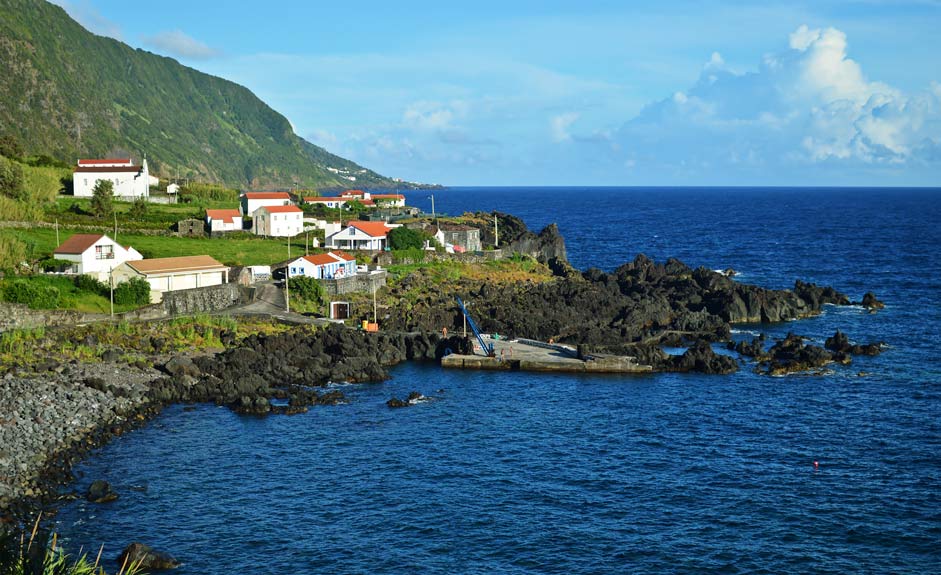
The islands of the Azores come in many different sizes and with different highlights, so there is a lot to choose from and it’s possible to custom plan the Azores holiday. There is something unique to be seen and experienced on every island, and the time needed to explore a certain island varies. It’s easy to spend a week or even two on the larger islands, while the main sights of the smaller islands can be seen in a couple of days. The easiest way of getting around during the Azores holiday is renting a car, available for relatively inexpensive fares, but there are also taxis and tour operators. The Azorean roads are mostly in good shape and sufficiently signposted.
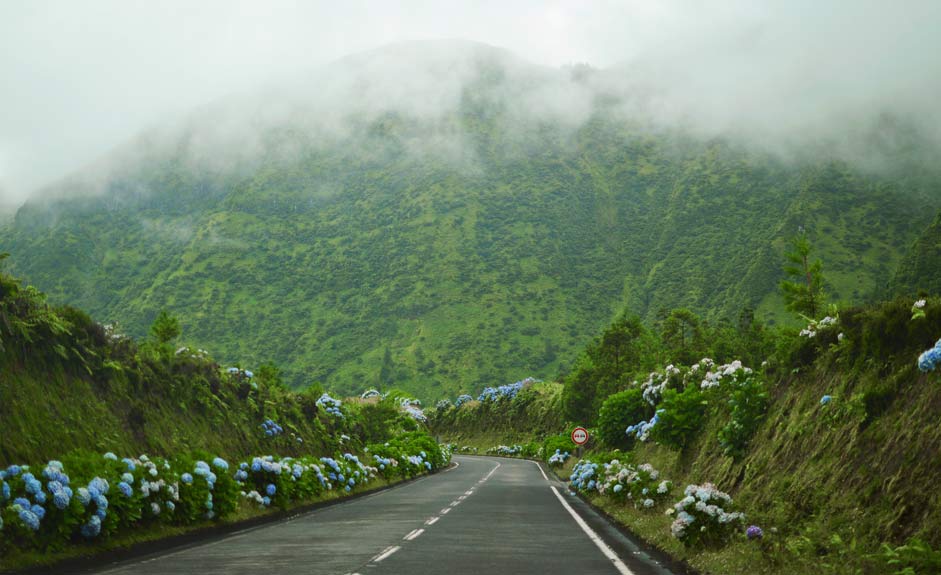
The largest and most versatile island São Miguel also receives by far the highest number of tourists annually, and the island has the largest selection of hospitality infrastructure such as hotels, restaurants and different services. There is a lot to see on São Miguel and it can be recommended as the first destination of introducing oneself to the Azores. São Miguel is also the only island where getting around is tolerably possible by public transport, even though the bus services don’t cover every corner of the island. On the other hand, it is also the only island already reached by some form of mass tourism.
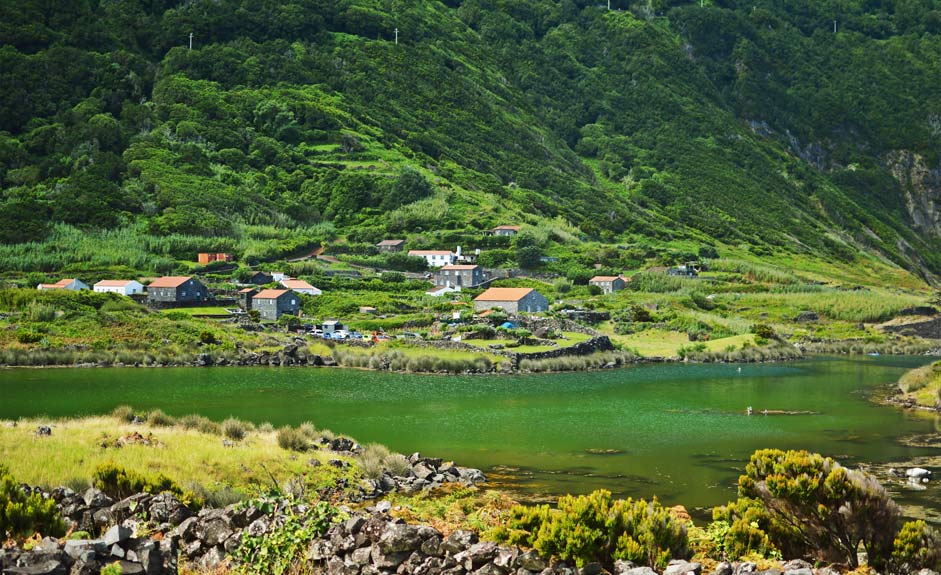
The Azorean cuisine
Azorean food is simple, yet tasty. The islands were very isolated from the rest of the world for a long time, and it’s because of this that many islands developed their own special dishes over time. Perhaps the most famous example is the cozido das Furnas from the Furnas village of São Miguel, a hearty pot dish cooked in a steaming fumarole of a volcanic crater.
The Azorean cuisine combines the typical Portuguese flavors with food plants of the subtropical climate, including cassava and sweet potato, but also exotic fruits, such as pineapple grown on São Miguel. There are also many specialties in the bakery selection, such as the bolo lêvedo bread that is baked on a pan. The Azores holiday is also known as a great chance to enjoy some fresh ocean fish and seafood. For example tuna, swordfish and barracuda can be found on the local restaurant menus.

Agriculture, and especially livestock farming, is an important livelihood on the islands. The Azores are known as producers of beef and milk products, so it’s advisable to try the excellent local cheese and butter. Especially the island of São Jorge is famous for its cheese production.
The climate of the Azores also enables coffee and tea cultivation. The only commercial tea plantations of Europe are located on São Miguel, and their yield can be taken home as a souvenir. On São Jorge, one can also sample locally grown coffee. There is also some wine production in the archipelago, and especially the island of Pico is known for its delicious wines, ripened amongst the lava rocks.
Price range in the Azores
Fish meal
Lunch of the day
Pizza
33 cl beer
Whale watching tour (2-3 h)
€7-16
€5-7
€6-9
€1-2
€50/person
The Azores holiday starts by stepping in a plane
There are some direct international flights to the Azores islands, for example from the United States, Canada, the United Kingdom, Germany, and a few other European destinations. From most other countries, there are flights via continental Portugal with a stopover at either Lisbon or Porto. The operating airlines include the national TAP Air Portugal, SATA – Azores Airlines and the British low-fare airline Ryanair.
On the Azores, there are five international airports, located on São Miguel, Terceira, Faial, Santa Maria and Pico. The two first ones have connections to the United States and Canada. Traveling to the Azores by ship is only possible on the luxury cruises crossing the Atlantic.

Traveling between the islands during the Azores holiday
Inter-island travel is possible either by plane or the Atlânticoline ferries. Air travel is faster and usually more reliable. SATA – Azores Airlines operates flights to all Azorean islands almost like a local bus company. However, the weather in the archipelago is unpredictable and can cause delays and sudden route changes.
Most ferries of Atlânticolines only operate during the summer, from May until October, because during the winter there is less demand and the rough seas are sometimes dangerous. There are ferry connections throughout the year between the “triangle islands” of Pico, Faial and São Jorge, situated close to each other. These connections are also the most reliable in terms of timetables.
The long-distance ferries usually travel via multiple islands and the journeys take several hours, sometimes even overnight. However, the ferry journeys are an experience of their own, so if schedule and seasickness allow, it’s advisable to hop on an Azorean ferry. During the ferry ride one can see the islands from the sea and sometimes watch the inhabitants of the Atlantic, including dolphins, flying fish and sea birds. The ferry schedules depend on the weather though, and in case of bad weather, the journey can be delayed even by days.
The ferries of Atlânticoline are modern, clean and safe, and equipped with toilets and cafeterias. On the overnight ferries it’s possible to book a cabin for sleeping. There is seating both on the outdoor deck and inside the vessel. Some ferries also feature a small car deck, but the reservation for a car should be made well in advance.
Climate and weather in the Azores
The climate of the Azores is maritime subtropical and more or less warm throughout the year. Because of the mild winters and comfortably warm summers, the archipelago is a year-round travel destination. Temperatures below 10 degrees C° are rare, and over 30 C° never occurs. The climate is very humid especially in the winter and there are many cloudy and rainy days. The high humidity also makes both cold and hot temperatures feel more intense. The sunny winter days sometimes feel like the Northern summer, but on the other hand, summer rains are also common. In the Azores one can experience all four seasons within one day.
The temperatures of the ocean water are higher than in mainland Portugal, thanks to the Gulf Stream passing next to the Azores. The sea temperatures are approximately 16 C° in winter and 24 C° in summer.
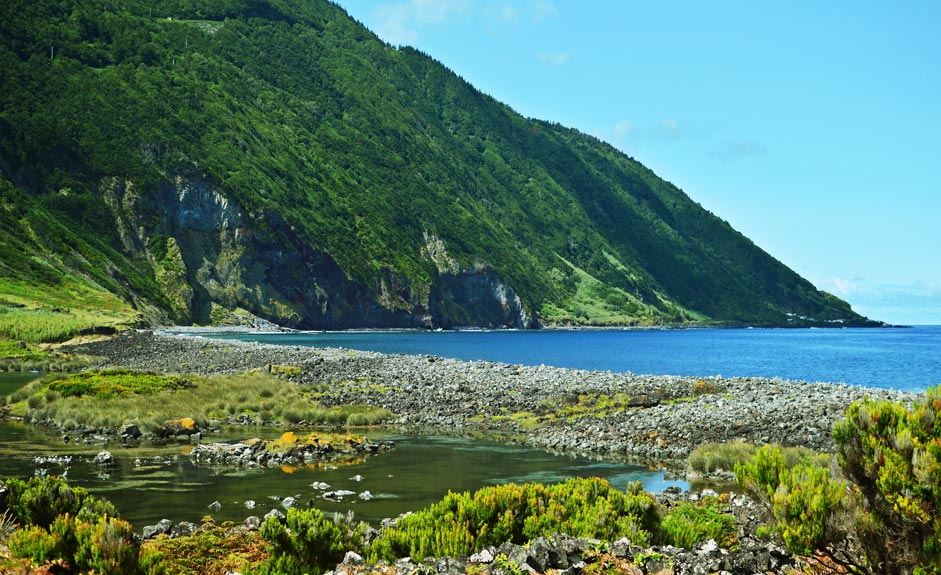
Winter: The daytime temperatures are usually around 16 to 18 C°, and nighttime temperatures vary normally between 11 and 16 C°. It rains a lot during the winter and storms are common, bringing high winds with them.
Spring: The maritime climate affects the temperatures with a delay, which is why the air warms up slowly in springtime. A clear difference to winter is noticeable as late as May, even though the rains start to decrease already in February.
Summer: In June, the mean temperature of the day rises over 20 C°. Daytime temperatures are between 23 and 26 C° in July-September and approximately 17 to 20 C° at night. It rains somewhat in the summer as well, so an umbrella might become handy.
Autumn: Temperature-wise, September is still a summer month, being warmer than June. In October the mean temperature of the day drops below 20 C°. During autumns, tropical storms and even hurricanes pass by the archipelago, but their strength has usually already diminished when they reach the Azores and the cooler ocean areas surrounding the islands.
---
Text and photography: Johanna Maldonado



